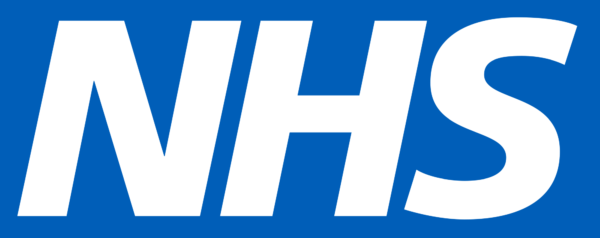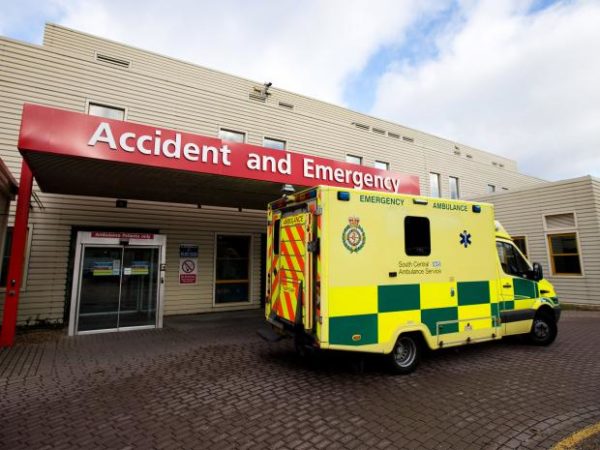Home Tags Posts tagged with "nhs"
nhs
The NHS is a national treasure. We use it all the time and never think about the costs associated with our health care. Unfortunately, we are keenly aware of the pressures that our national health service is under. From the perspective of our papers, the NHS is buckling under a lack of funding and according to a recent survey from UK solicitors, Your Legal Friend, 86% of the public is aware of the publicised pressures the NHS is under.
The 2,000 strong survey highlighted an important fallout from this awareness, that we seem to be neglecting to chase up our follow up appointments, or worse, delaying non urgent treatment in order to ease the burden on the NHS. The problem with taking on this burden from a personal point of view, is that you are compromising your health in the process.
Recent NHS data suggested that more people than ever are waiting longer than the official 18 week target for non urgent treatment. According to Your Legal Friend, 80% of us would wait a month before we chase up an expected follow up appointment. So what can we do to be uncompromising when it comes to our health, but still ease the pressure on the NHS?

Image source Wikimedia
- Follow up!
Missed follow up appointments can be a huge headache, not just for you but for the NHS. As administrative pressures see more people being exposed to the risks of negligence, it’s important that you stay on top of your own care plan. Ask for important dates during appointments, ask when you should follow up by if you’ve not hear anything and put it all in a diary. You are not being a nuisance!
- Keep notes
Keeping a symptom diary before you go to see your doctor shows how seriously you are taking your illness and gives them much more information to work with. The average GP appointment is supposed to be up to 15 minutes. That is a very short amount of time in which to diagnose a problem, keeping a health diary provides both you and your healthcare professional with a reliable account of your symptoms.
- Use resources thoughtfully
We’ve all seen the advertisements showing how expensive an ambulance call out can be. Use resources thoughtfully by checking online first to see if you need a GP appointment, a trip to a&e or simply a visit to the pharmacy.
 The viability of the health care system in the UK has been under fire for some time, with pundits along with patient advocacy groups, citizens, and medical providers all adding to the heated discussion. Each month, it seems new data is published that sheds less than optimistic light on the operations of the NHS, and the latest reports are no exception. In July, details about the success of meeting patient wait time targets was released, highlighting the fact that intended marks have been missed consecutively for the past two years. Accident and emergency units (A&E) throughout the system have failed to meet the 95% target of no more than four hours, leaving between 5 and 10% of patients waiting an extended period to receive the care they need.
The viability of the health care system in the UK has been under fire for some time, with pundits along with patient advocacy groups, citizens, and medical providers all adding to the heated discussion. Each month, it seems new data is published that sheds less than optimistic light on the operations of the NHS, and the latest reports are no exception. In July, details about the success of meeting patient wait time targets was released, highlighting the fact that intended marks have been missed consecutively for the past two years. Accident and emergency units (A&E) throughout the system have failed to meet the 95% target of no more than four hours, leaving between 5 and 10% of patients waiting an extended period to receive the care they need.
Although some argue that patient wait times have improved since targets were introduced, the recent data suggests otherwise. The health care system millions of people depend on each year is under a great amount of pressure from external and internal sources, creating an environment where providing the highest quality patient care, including appropriate wait times, is a challenge. The aging population combined with an increased reliance on emergency units for medical issues ranging from acute to severe means patient wait times may not be realistically lowered in the near future. Other moves within the NHS are also plaguing the success of the health care system throughout the country.
A&E Unit Closures
The missed targets for patient wait times are not the only unsettling news coming from the NHS in recent months. Earlier this year, the closure or downgrade of several emergency units was announced, based on a sustainability and transformation plan set in motion last year. The health care system has been working toward more efficiency in its operations as part of a five-year strategic plan, and a two dozen A&E units are on the chopping block as part of the initiative. This drastic change is meant to force patients to rely less on emergency departments and providers for care that could be managed in a primary care facility, ultimately releasing some of the pressure put on already stretched thin units. Consolidating care facilities is planned by staffing non-emergency facilities with GPs, and tapping into the power of recent technology to provide care options within a patient’s home. Because wait time targets include patients being seen for all varieties of illnesses and injuries, the NHS believes that putting more focus on primary care services will help A&E wait times even as several units close.
Each of these strategies is meant to empower patients to take a closer look at the way they view health care, potentially transitioning the country toward a more preventative mindset. In the process, the hope is that the operating costs of hospitals are reduced which then gives way to adding staff, increasing provider pay, and improving the way patients receive medical treatment when it is needed.
The Risk to Patient Care
Even though the shifts within the NHS and specifically the A&E space come from a good place, many are concerned the heavy focus on cost reduction will do little in the realm of patient care quality. A solicitor from a medical negligence firm that handles several accident and emergency claims each year explains that there are more factors to consider in the debate. In the last year, the rate of bed occupancies has reached an all-time high, and that results in delays across the board. Not only are current patients kept in the hospital longer than necessary due to lack of at-home or social care service availability, new patients in need of diagnosis and treatment are left waiting in the wings. Combining these issues with A&E closures means wait times for patients may not hit intended targets any time in the near future, putting patients’ health and well-being at unnecessary risk.
The rapid aging of the population and the increased number of patients seeking care each year are not easily solved issues for any country’s health care system. But the NHS’ focus on reduction of cost under the guise of improved medical care may not prove beneficial to patients in the long run. The A&E closures and downgrades currently taking place have the potential to help shift the population away from seeking urgent treatment for health issues that are less severe, but only time will tell if this transition will ultimately improve the experience patients have when utilising the health care system.
In the upcoming year, seven cities throughout the UK will adopt recommendations put forth in the Better Births report, tasking the country’s health care system with improving the quality of maternity care across the board. The broad recommendations include a significant amount of funding for maternity care training, innovation, and safe spaces for providers to share ideas about what quality maternity care looks like; each city promising to adopt the recommendations will focus efforts on increasing the personalization of care to expectant mothers, granting easier access to care thing a single location, and collaborating with community services to manage ever-growing caseloads.

Photo credit : Phil Tragen
Through the Safer Maternity Care plan announced earlier this year, the country’s maternity care advocates added a provision to make the process of receiving compensation for poor-quality care easier on patients and their families. A rapid resolution and redress scheme is intended to scale back the costs associated with litigation and the lengthy claims process when tragic outcomes, like stillbirths, maternal and neonatal injuries, and death, take place within the healthcare system. While reducing the overall expense of the legal process for suffering families is important in lifting the financial burden off the shoulders of the health care system, the new rapid compensation program stands to leave some patients wanting.
Fighting Litigation Culture
The Better Births report predicts that nearly 1% of maternity care patients, including mothers and their newborns, suffer from an avoidable injury or death while under the care of a UK medical provider. With just under 700,000 births in the last year, and a projected increase in years to come, the fight against litigation culture throughout the NHS is a glaring need. However, the suggested rapid resolution and redress scheme may not be the best choice for patients and their families. Instead of going through outside legal channels to get their complaints heard and the financial support they need to move ahead with life after a negligent outcome, the program offers patients the chance to request compensation from a board of medical professionals who determine what, if any, amount is due based on their circumstances.
Unfortunately, the rapid resolution and redress scheme comes with several caveats, the most pressing being a lack of communication. A representative from a leading medical solicitor firm that handles numerous maternity care negligence claims each year, explains that financial compensation is toward the bottom of the priority list for families. Instead, they want answers as to what took place, why it took place, and who is ultimately responsible. The compensation scheme fails to afford patients the opportunity to get this critical information which can exacerbate the loss exponentially.
In addition to lacking communication with the hospital, patients who take part in the recommended program may be left without sufficient means to manage ongoing treatment or changes to the quality of their lifestyle. Part of the litigation process is understanding the full breadth of the circumstances and receiving compensation to cover each of those expenses. When the process is expedited and taken out of the capable hands of the court, patients and their families may be left without adequate financial support – and no recourse to receive it in the future.
Looking Ahead
Reducing the number of medical mistakes and oversight that takes place within the UK’s maternity care offices should be the intended purpose of the Safer Maternity Care Plan. Although the rapid resolution and redress scheme may work to mitigate some of the costs associated with poor-quality care within the UK’s health care system, only time will tell if the program works to the benefit of the hospitals more so than patients and their families. Fortunately, the influx of funding through the Safer Maternity Care plan lays the groundwork for the establishment and implementation of better training and innovation in the field, which may help toward achieving positive, sustainable outcomes for the most vulnerable patient population and their loved ones.
Ten US healthcare workers are being evacuated from Sierra Leone after another aid worker back from the West African country had tested positive for Ebola and was being treated in hospital near Washington DC.
The evacuees may have been in contact with the Ebola patient and are being flown back on non-commercial transport.
The Centre for Disease Control and Prevention (CDC) said none were currently showing Ebola symptoms.
They will stay in voluntary isolation for a 21-day incubation period. If any start to show symptoms they will be taken to one of three hospitals which are equipped to deal with Ebola cases.
On March 13, the CDC sent a team to Sierra Leone to investigate how the healthcare worker became exposed and determine who might have been in contact with the infected person.
The patient is being treated at the National Institutes of Health in Maryland.
It is the 11th person with the deadly virus to be treated in the US.
More than 10,000 people have died in the current Ebola outbreak.
[youtube InJFZYLoO6U 650]




